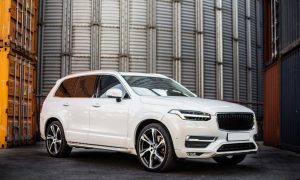The automotive industry is undergoing a seismic shift. Cars are no longer just machines for mobility; they’re becoming rolling computers packed with intelligence. From electrification to AI-driven personalization, the industry is rewriting the rules of what it means to own a car. Consumers no longer just want horsepower. They want seamless digital integration, safety innovations, and experiences that feel tailor-made.
So, what are the latest trends in the high-tech car industry? Let’s dig in, explore the transformations shaping mobility today, and see what lies ahead for automakers, drivers, and investors.
The Electrification Revolution
The most apparent trend—and arguably the most powerful—is electrification. Tesla may have set the stage, but every major automaker is now committed to electric vehicles (EVs). Ford invested billions into its EV line, with the F-150 Lightning already redefining how Americans think about pickup trucks. General Motors announced plans to sell only zero-emission vehicles by 2035. Meanwhile, Chinese companies like BYD and NIO are gaining global traction, underscoring that this race isn’t confined to the West.
The appeal of EVs is twofold. First, environmental concerns are prompting consumers and regulators to adopt greener solutions. Second, battery technology is improving rapidly, addressing “range anxiety” that once deterred hesitant buyers. BloombergNEF forecasts that EVs will make up nearly 60% of passenger vehicle sales globally by 2040. That’s no longer futuristic speculation—it’s a roadmap being followed aggressively today.
The March Towards Autonomous Driving
Every conversation about the future of cars eventually steers toward self-driving technology. Google’s Waymo, Tesla’s Autopilot, and startups like Cruise are leading the charge. While fully autonomous vehicles aren’t lining your driveway yet, progress is undeniable.
Level 2 and Level 3 autonomous systems—such as lane-keeping, adaptive cruise control, and hands-off highway driving—are becoming increasingly mainstream. Mercedes-Benz has recently gained approval for its Level 3 Drive Pilot system in Nevada and California, a regulatory milestone that could accelerate the system’s adoption. The ultimate promise? Roads with fewer accidents, less traffic congestion, and more productivity for drivers-turned-passengers.
Still, questions remain. How do we balance safety, liability, and regulation? Consumers may not fully trust autonomous cars yet, but as features roll out incrementally, trust will grow—just like it did with seatbelts and airbags decades ago.
Hyper-Connectivity and the Digital Cockpit

Think about your smartphone experience. That’s precisely what automakers want to replicate inside vehicles. The digital cockpit is becoming a key differentiator. Gone are the days of clunky infotainment systems; instead, we now see intuitive, software-rich dashboards.
Tesla set the standard with its minimalist, screen-dominated interior. Now, companies like BMW, Hyundai, and Audi are reimagining dashboards with augmented reality displays, haptic feedback, and seamless app ecosystems. Apple CarPlay and Android Auto are being replaced with deeper integrations, where your digital life is mirrored inside the car.
The goal? To keep drivers informed, entertained, and safe. But here’s the kicker: automakers are realizing data is gold. Every interaction in the cockpit provides insights for new services, personalization, and monetization.
5G Integration and the Promise of Vehicle-to-Everything (V2X) Communication
If hyper-connectivity is what, 5G is the how. The rollout of 5G networks is transforming vehicles into fully connected nodes on the road. With ultra-low latency, cars can communicate in real-time with traffic lights, other vehicles, and even pedestrians’ smartphones.
Imagine this: your car gets a warning that a vehicle two miles ahead slammed its brakes. Or, your EV automatically maps you to the nearest open charging station without delay. These aren’t sci-fi fantasies—they’re the practical promises of V2X technology powered by 5G.
Japan and South Korea are already testing large-scale deployments of V2X. In the U.S., pilot programs are rolling out in smart cities. For automakers, this is a once-in-a-generation chance to reduce collisions and boost efficiency.
Software-Defined Vehicles (SDVs)
For decades, hardware defined the value of cars. That’s changing fast. Software-Defined Vehicles (SDVs) are now the industry’s buzzword. In SDVs, software dictates the driving experience, functionality, and upgrades—turning cars into evolving tech platforms.
Automakers like Volkswagen and GM are building in-house software divisions. Tesla’s market value, despite selling fewer vehicles than Toyota, is due primarily to its software-driven model. Instead of being locked into a car’s features at the time of purchase, owners can unlock new functions later—just like downloading apps on a smartphone.
This is a dramatic shift. It also signals a new war: the fight for top software talent. For the first time, Silicon Valley engineers are just as valuable to automakers as mechanical experts.
Redefining Vehicle Functionality Through Advanced Software
Advanced software doesn’t just upgrade navigation or entertainment—it redefines the car’s core identity. Porsche offers track-day modes that optimize suspension and power delivery with a digital toggle—Rivi. In contrast, n updates driving dynamics for off-road adventures with new code, not new hardware.
The brilliance lies in flexibility. Instead of waiting years for the next model refresh, drivers can access new features overnight. That adaptability boosts consumer satisfaction and generates recurring revenue streams for automakers.
The Power of Over-the-Air (OTA) Updates and Personalized Customization
OTA updates are becoming the gold standard. Tesla popularized it, but now even traditional players like Ford and Toyota are embracing it. Want heated seats? A software unlock. Need performance tuning? A downloadable upgrade.
These updates also enable personalization on a large scale. Imagine a car that adjusts its climate settings, driver’s seat position, and music preferences automatically when you step in. That’s not futuristic—it’s happening right now in vehicles like Mercedes EQS and Lucid Air.
New Revenue Streams and the Shifting Automotive Value Chain
Automakers are realizing that car sales are no longer the sole focus of their business. Subscriptions for premium software features, in-car entertainment packages, and even insurance integrations are creating entirely new revenue models.
BMW tested charging a monthly fee for heated seats—sparking controversy but also highlighting the industry’s hunger for ongoing revenue. Analysts predict the global market for automotive software subscriptions will exceed $200 billion annually by 2030. That’s not pocket change—it’s transformative.
This shift also reshuffles the automotive value chain. Tech companies, cloud providers, and app developers are taking center stage. The question now is: will automakers dominate the ecosystem, or will they simply become hardware suppliers for tech giants?
Generative AI (GenAI) and Its Application in SDVs

Generative AI isn’t just writing blogs and creating art—it’s shaping the future of the automotive industry. AI models are being embedded into SDVs to power everything from predictive maintenance to hyper-personalized driving experiences.
Imagine an AI assistant that predicts when your brakes need service, schedules the appointment, and syncs it with your calendar. Or a system that adjusts your car’s energy consumption based on driving habits and real-time weather. Companies like Nvidia and Qualcomm are developing AI platforms tailored for automakers.
There’s also a creative side. Designers are using GenAI to brainstorm car interiors and optimize aerodynamics, slashing design timelines. The industry is only just scratching the surface of what AI can bring to the mobility sector.
Innovation in Automotive Manufacturing and Supply Chains
Behind the scenes, manufacturing and supply chains are also undergoing significant evolution. Automation, 3D printing, and digital twins are revolutionizing how cars are built. Tesla’s Gigafactories utilize giant casting machines, which significantly reduce parts and cut costs dramatically. BMW leverages 3D-printed components for rapid prototyping and niche production runs.
Supply chains, battered by pandemic disruptions, are also getting smarter. Companies are adopting AI-driven forecasting to avoid chip shortages and delays. Blockchain is being tested to track parts and ensure the ethical sourcing of raw materials, such as cobalt and lithium.
These changes may not be flashy, but they’re critical. Without resilient supply chains and efficient factories, the innovations we see on the road would never happen.
Conclusion
The high-tech car industry is moving faster than ever. Electrification is reshaping energy. Autonomous driving is redefining mobility. Software is replacing hardware as the soul of the car. And AI, 5G, and advanced manufacturing are writing the next chapter in automotive history.
So, when someone asks, “What are the latest trends in the high-tech car industry?” you can answer confidently. It’s not just about faster cars or shinier gadgets. It’s about a transformation that’s creating safer roads, cleaner air, and more intelligent mobility.
The future isn’t around the corner—it’s already here. The only question left is whether we’re ready to embrace it.
FAQs
The latest trends include electrification, autonomous driving, hyper-connectivity, 5G-enabled V2X communication, software-defined vehicles, OTA updates, AI integration, and advanced manufacturing.
Yes, but only in limited capacities. Level 2 and Level 3 systems, such as Tesla Autopilot and Mercedes Drive Pilot, are commercially available.
SDVs allow cars to evolve through software updates, unlocking new features and revenue opportunities long after purchase.
5G enables real-time communication between cars, infrastructure, and pedestrians, improving safety and traffic efficiency through V2X technology.
Yes. AI can learn driver habits, predict maintenance needs, and adapt vehicle settings for comfort, safety, and efficiency.




